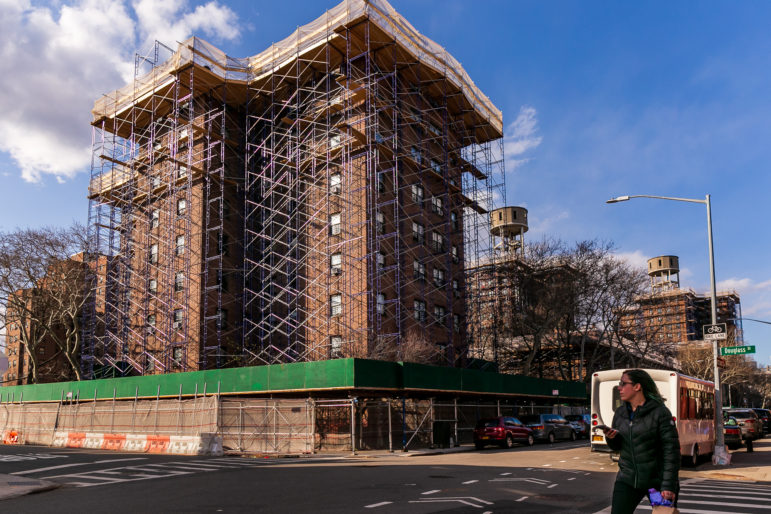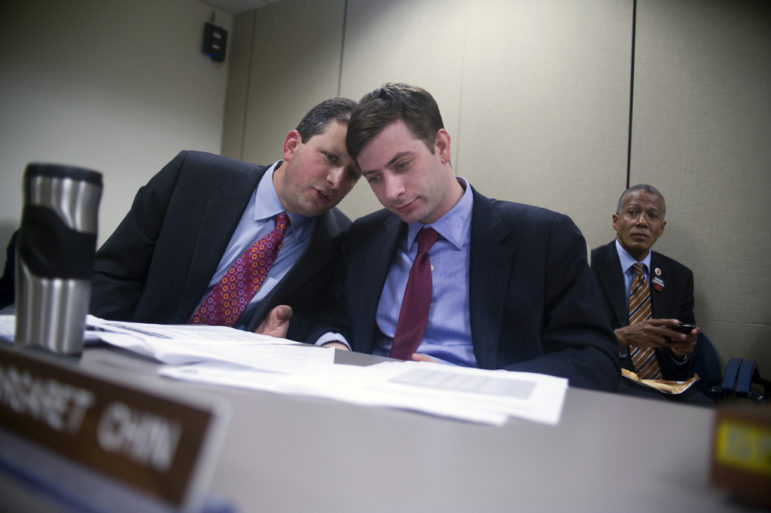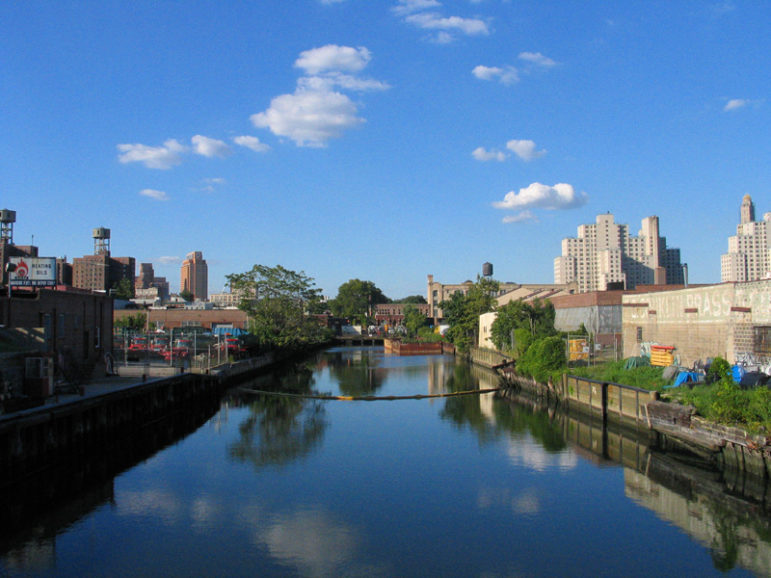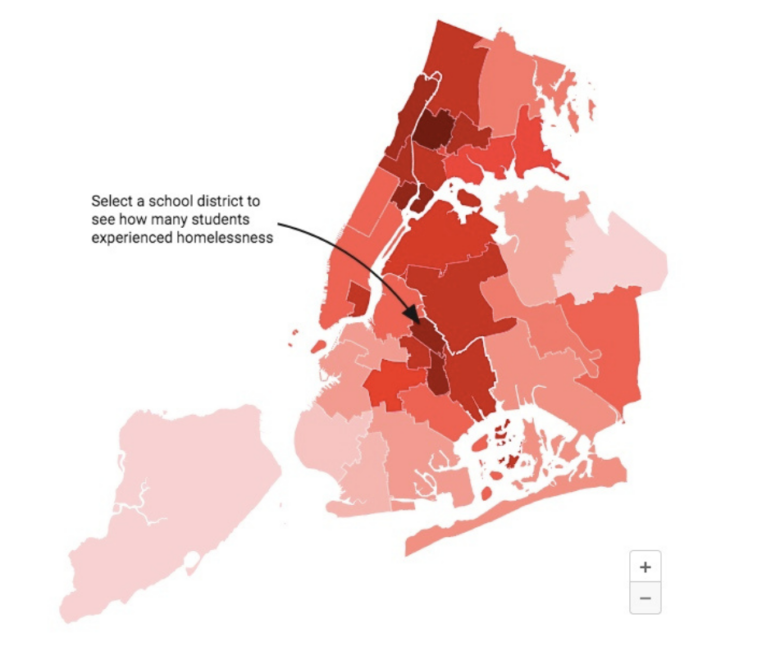
Southeast corner of NYCHA Gowanus Houses at Douglass and and Bond Streets. The two major NYCHA developments at the northern end of the neighborhood are not part of the rezoning proposal, but the land adjacent to them is.
Gowanus residents and community groups await the city’s environmental impact statement—a document analyzing the potential impacts of a land-use change—for the city’s proposal to rezone 80 neighborhood blocks. As large real-estate deals continue to close, neighborhood stakeholders have raised some unresolved concerns about the scope of the environmental impact statement and whether it will address resiliency needs and clean-up efforts on the Canal.
In October, Community Board 6 sent a letter to DCP Chairperson Marisa Lago saying the board requested three pre-certification meetings and information about benchmark goals of the proposed rezoning. The Community board, residents and elected officials want the scope of the Draft Environmental Impact Statement to include the impact of the rezoning on NYCHA properties Wyckoff Gardens, Gowanus Houses and Warren Street Houses, in hopes of tying significant investment in those NYCHA properties to the rezoning.
The Community Board is also asking for details on the economic incentives and land-use actions the city intends to undertake to support the retention and enhancement of industrial and other manufacturing jobs. Board members say those actions must be linked to the rezoning and mitigate against loss of the area’s manufacturing square footage within the Gowanus Industrial Business Zone (IBZ).
The Board also wants more information on the proposed Special Gowanus Mixed Use District (an area where land use regulations would allow for a mix of residential, commercial, light-industrial, arts-related and production uses) and details on its uses for community review with adequate time prior to ULURP. The specifics must include requirements on new building, infrastructure and landscape designs to mitigate impacts on the ecosystem, “The zoning criteria for the Special Mixed-Use District must be clear and understandable,” stated the letter.
It also asks that existing and new infrastructure such as the sewer system, transit and/or utilities be sized to support the projected growth of the district and beyond the proposed rezoned area, including the IBZ and NYCHA properties, while avoiding unfavorable impacts. The letter also emphasized the importance of increasing accessibility—especially to transit—and creating sustainable and resilient development with NYCHA and the IBZ. “Given the scale and nature of this rezoning, CB6 also requests that DCP schedule, at least, three pre-certification meetings at the Committee level so that we can learn as much as possible about the proposed rezoning and its likely impact on our neighborhood and residents,” said the letter.
According to the city’s Department of City Planning, the Uniform Land Use Review Procedure (ULURP) will enable the community and stakeholders to weigh in on the proposed rezoning, the environmental analysis and all components of a neighborhood plan. Additionally, DCP said it would continue to work with the community to ensure the concerns are addressed and it is exploring all ideas to address significant concerns related to NYCHA, at Gowanus and across the city, to ensure funding for necessary repairs.
“We are working to complete the Draft Environmental Impact Statement for Gowanus and to launch public review, to be able to realize a shared vision for a green, inclusive, mixed-use neighborhood,” DCP said in an emailed statement to City Limits.
According to Brooklyn’s Community Board 6 District Manager, Mike Racioppo, the community board is looking forward to continuing a dialogue with DCP.
Councilmembers seek clarity

William Alatriste for the City Council
Councilmembers Lander and Levin.
Local Councilmembers Brad Lander and Stephen Levin are also waiting on the EIS. Both have said the city has to meet the goals of the rezoning and clarify the details for each goal. Lander says, for instance, that there has been no clarity on NYCHA investments or details on how the city will ensure no combined sewer overflow (CSO) pollution is added to the canal. (CSOs occur in the older parts of the city’s sewer system that combine wastewater and rainwater, where storms can overwhelm treatment plants and cause untreated wastewater to be released.)
“Those goals have to be addressed,” Lander tells City Limits. “We have to answer all these questions about how Gowanus is going to be rezoned. Every one of these questions from the sustainability and cleanliness of the Canal, to the school seats, to the affordability issue are crucial. And we, Gowanus, has been clear for a decade about what the community needs.”
Landers adds that Gowanus is looking at the whole picture: “Balancing between the things we need at a citywide level and the things people want in their neighborhoods is just part of a planning process.”
In Levin and Lander’s letter on the draft scope of work, both Councilmembers wrote the rezoning plan had been worked on for the last few years and had met many of the community’s goals yet there were still numerous parts to the plan that needed substantial improvements such as investments for schools, transit, open space, flooding and resiliency, energy, and other infrastructure.
“Planning for the future of our city is not easy. We are facing an ongoing affordability and inequality crisis, even as the city’s population continues to grow, so we need to build new housing, especially in neighborhoods like Gowanus that offer strong opportunities to connect to good schools, jobs, and transit. At the same time, we know that many residents fear or oppose additional development in their neighborhood. Our shared obligation is to develop a plan that allows for growth, makes sure that growth achieves our public goals, invests in the infrastructure necessary to sustain it, mitigates potential impacts, and creates a community that is a great place for people across lines of difference to live, work, and recreate,” read the letter.
What to expect near the Canal
In March, the city released its draft scope of work which projected that the prospective rezoning of Gowanus would trigger the creation of an estimated 8,200 new apartments by 2035. The draft scope maps out the environmental impact study that must commence before the project can move into ULURP.
The draft Gowanus rezoning proposal spans 80 blocks bounded by Bond Street to the west, Baltic Street to the north, 4th Avenue to the east from Pacific Street to 15th Street and cuts off near Hamilton Avenue in the South in the Southwest Brooklyn Industrial Business Zone. It is part of the de Blasio administration housing plan to create and preserve 300,000 affordable housing units, partly through rezoning up to 15 neighborhoods across the city.So far, East New York, Downtown Far Rockaway, East Harlem, Jerome Avenue in the Bronx, Bay Street on Staten Island and Inwood have been rezoned. In addition to Gowanus, rezonings of Bushwick and Southern Boulevard in the Bronx are on the horizon.
As the broader rezoning plan rolls toward public review, there’s been action taken to protect historical sites from what is expected to be a wave of post-rezoning development.
Ten months after the city’s rezoning proposal hit, eight buildings over five sites gained historical landmark status in Gowanus in October. The city’s Landmarks Preservation Commission identified buildings with the most striking examples of industrial development in Gowanus during the late-nineteenth and early-twentieth centuries: the Gowanus Flushing Tunnel Pumping Station and Gate House found at 196 Butler Street built between 1910 and 1911; the Somers Brothers Tinware Factory found on 3rd Street building built in 1884 and in 1891; the Brooklyn Rapid Transit Company Central Power Station Engine House constructed between 1901 and 1902; the Montauk Paint Manufacturing Company Building found on 2nd Avenue built in 1908; and the American Society for the Prevention of Cruelty to Animals (ASPCA) Rogers Memorial Building which first opened in 1913 and was once hailed as the “largest, most complete animal shelter in the world.”
“We view this as a great first step by the Landmarks Preservation Commission,” said Gowanus resident Brad Vogel and co-founder of the Gowanus Landmark Coalition in a press statement. Vogel said the coalition would continue to push for other sites in Gowanus, Red Hook and Carroll Gardens.
Meanwhile, private development activity continues in the neighborhood. In October luxury residential developer Avery Hall Investments paid an estimated $18.6 million to the Pontone family for seven parcels along Union and President streets which include three single-story warehouses situated in a qualified federally-mandated opportunity zone created under the 2017 Tax Cuts and Jobs Act. The three single-story commercial warehouses at 514 Union, 469 President Street and 473 President Street, total 51,155 square feet and are slated for residential, commercial and light-manufacturing mixed-use development. The properties qualify for several tax incentives, including those afforded through Opportunity Zone legislation and the Brownfield Cleanup program, an initiative granting tax credits for site preparation, remediation and hard development costs.
Environmental groups join forces to tackle resiliency efforts

Mr. Nygren
The Gowanus Canal, seen from Union Street.
Last Tuesday night, the Gowanus Canal Conservancy and Resilient Red Hook—two Brooklyn-based environmental advocacy groups that include residents from both neighborhoods—hosted a gathering to discuss ideas on how to address infrastructure and coastal flooding in the face of climate change.
Gowanus Canal Conservancy (GCC) executive director Andrea Parker said both groups had united in their efforts to protect their communities for a sustainable and resilient future and part of that effort includes advocating to the city to ensure its rezoning plan meets the environmental goals of the community.
The Gowanus Canal Conservancy group is also a member of the Gowanus Neighborhood Coalition for Justice which wants to see an equitable, resilient and sustainable rezoning plan that should include investments for public housing.
Among many issues, the GCC’s number one concern is wastewater. According to the rezoning proposal’s draft scope, the city projects an increase from an estimated 179,000 gallons of local wastewater per day to approximately 1.8 million gallons daily. The GCC fears the increase in development and residents could burden the neighborhood’s sewage system and cause untreated waste to flood the waterway through Combined Sewage Overflows (CSOs). The GCC wants a net zero CSO impact.
“We are asking the city to accurately measure and to come up with a clear strategy to mitigate the overflow that will caused by the rezoning,” says Parker. The group has been discussing how the city’s sewage and water management agencies work and how both agencies could be more effective. Parker says the issue is that sewage and coastal resiliency has not been thought about as simultaneous problems.
The Gowanus Canal is the site of a federal Superfund cleanup. Last year, local Environmental Protection Agency project manager Christos Tsiamis told community members the canal was the cleanest it has ever been in 150 years, according to the Brooklyn Paper.
The GCC also wants the Gowanus Special Mixed-Use District to address sustainability and resiliency goals that requires a district-scale approach to sustainability and environmental justice. The groups also want the area’s high groundwater table and underground creeks to be modeled to undertake the impacts of construction and sea-level rise.
Additionally, the GCC wants to see accessibility improvements made from the waterfront to pedestrian-friendly streets, improved public transportation and a community-based oversight group to ensure the rezoning goals are being met.









3 thoughts on “Gowanus Groups Pressing for Specifics as Rezoning Review Nears”
Very impressive reporting.
Pingback: Zillow president to step down, Compass buys AI startup | ReallyList.com
Pingback: Zillow president to step down, Compass buys AI startup | Juspost NewsHub